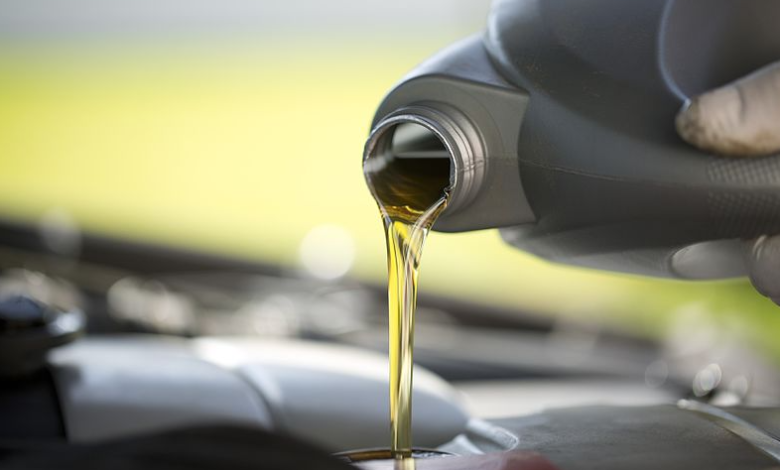The difference between the types of car engine oil in the market

The types of car engine oil in the market are made for different types of car engines. This is entirely dependent on the engine’s performance capacity which is determined by the engine CC size. Oil affects the engine’s performance and fuel consumption. In fact any undetected engine oil leakage could cause damage to the engine if you drive for a long distance.
Just confirm the color of the puddle under your car and it will tell you which fluid is leaking. The oil you choose for your car is also dependent on the type of whether changes your place of residence experiences. This is because, some types of car engine oil are greatly affected by extreme whether conditions. This disrupts the oil’s capability to flow and protect the engine.
Every car owner knows the fact that oil should be changed at some point in the mileage. Engine oils are made with different components which determine their behavioral characteristics. And a couple of things may interrupt these characteristics such as particle elements and extreme whether. Both of them interfere with the oil’s viscosity capability.
When this happens, it’s time for an oil change. Though not all oils need frequent changing for better lubrication of engine parts. This depends on the oil’s capability to resist particle accumulation and extreme whether. Some oils ability to resist particle accumulation is seen when they form a layer through out the engine block. This layer reduces friction and eliminates the effects of friction and grinding.
Types of car engine oil.

There are a couple of things that differentiate the various types of oil. These are inclusive of;
- The oil manufacturing method.
- The oil’s oxygen capacity.
- Viscosity of each type of engine oil.
- The number of times each type of engine oil needs to be changed.
- The price of each oil.
- The types of engine that the oil is made for according to performance.
- The oil’s ability to resist extreme whether.
1. Mineral oil.
This type of car engine oil is the oldest type of oil that led to the creation of the other oils. It comes from refined petroleum. The petroleum receives additives that alters it’s functionality so that it’s able to withstand high engine temperatures.
Its creation process affects the oil’s capacity to offer lubrication which protects the engine against friction. Though this lubrication capacity is lower when you compare mineral oil to the others. Because of its low level lubrication properties, mineral oil should not be used in high performance engines.
Also, it’s very inefficient when it comes to cold engine starts. Meaning that the car will need to warm up first before you take off. This will give the oil sufficient time to circulate throughout the engine block. Further, mineral oil is very poor at retaining its viscosity index during extreme heat or cold. Mineral oil also demands more regular oil changes than the others because it accumulates the a lot of particle elements.
2. Semi Synthetic oil.
It’s a balance between the mineral and full synthetic oils. Hence making it possess the characteristics of each one of them. The oil offers the affordability of mineral oil and the performance of full synthetic oil.
Mixing synthetic and mineral oil increases viscosity which improves the oil’s cold engine start characteristics. Further, it improves the lubrication capacity hence reducing the negative effects of friction. The synthetic oil further creates a more stable oil composition for extreme whether temperature resistance. That means it’s viscosity index is very stable.
Full Synthetic engine oil.
The latest technology in the industry produces this type of car engine oil. Its creation happens within the laboratory to give it desired functionality in terms of protection and fuel efficiency. The process of creating full Synthetic oils in the laboratory involves braking down the mineral oil into the most basic molecular components.
It also eliminates any impurities that are in the mineral oil. Further it creates a viscosity index that makes the oil superior in terms of extreme whether resistance.
Different grades of oil.
Different grades of oil refers to the viscosity index of the oil. The manufacturer’s preferences and the type of weather affect the oil’s viscosity index. Because extreme temperatures actually affect the oil’s molecular formation. Further, when the engine is about to start, the oil’s viscosity determines how fast it can circulate throughout the engine block.
Oil grades are codes that have a number and letter with a dash separating them at the middle. The numbers represent the oil’s reaction to cold engine starts as well as extreme weather conditions.
For now we will look at the case study of a certain grade of oil. This will cover the general knowledge of the oil grading system. Hence you will be able to choose the right grade of oil that you need for your engine.
This is our case study, 20W-40. Most oil containers have this type of marking on them. Here we will look at what each character means;
The first number followed by the letter W, represents how the oil reacts to a cold engine start. Further it represents how this type of engine oil will react during winter season or extreme weather. The smaller the number before the letter W, the better the oil flow during winter. The number after the W will represent the capacity of the oil to flow during normal engine






